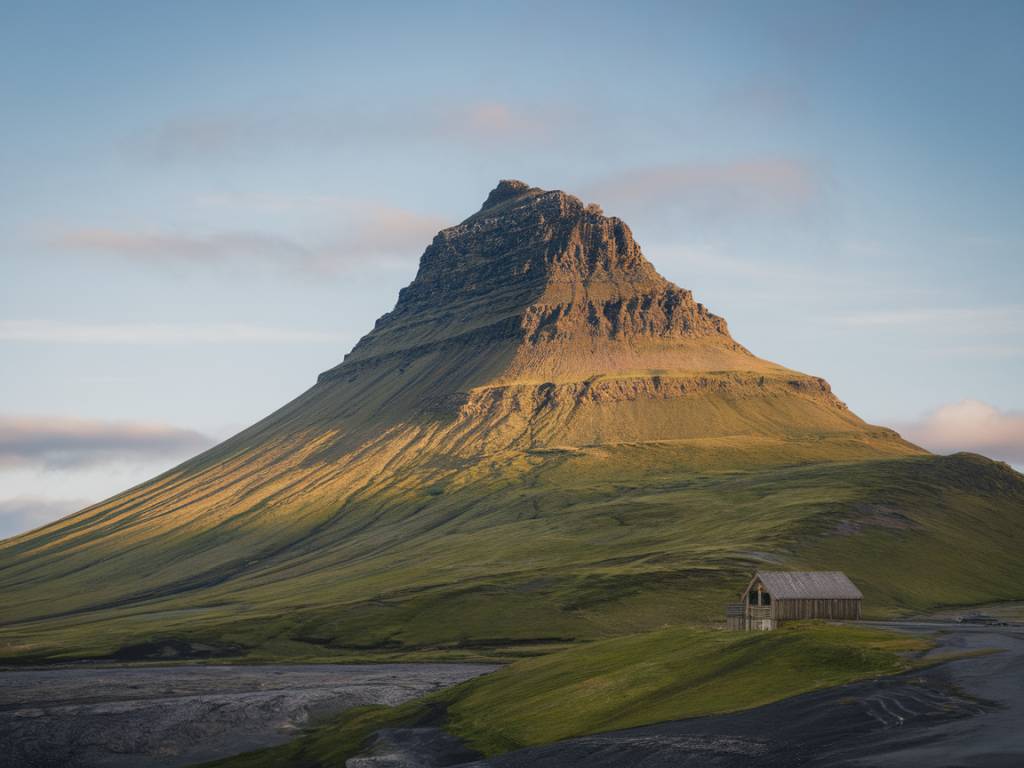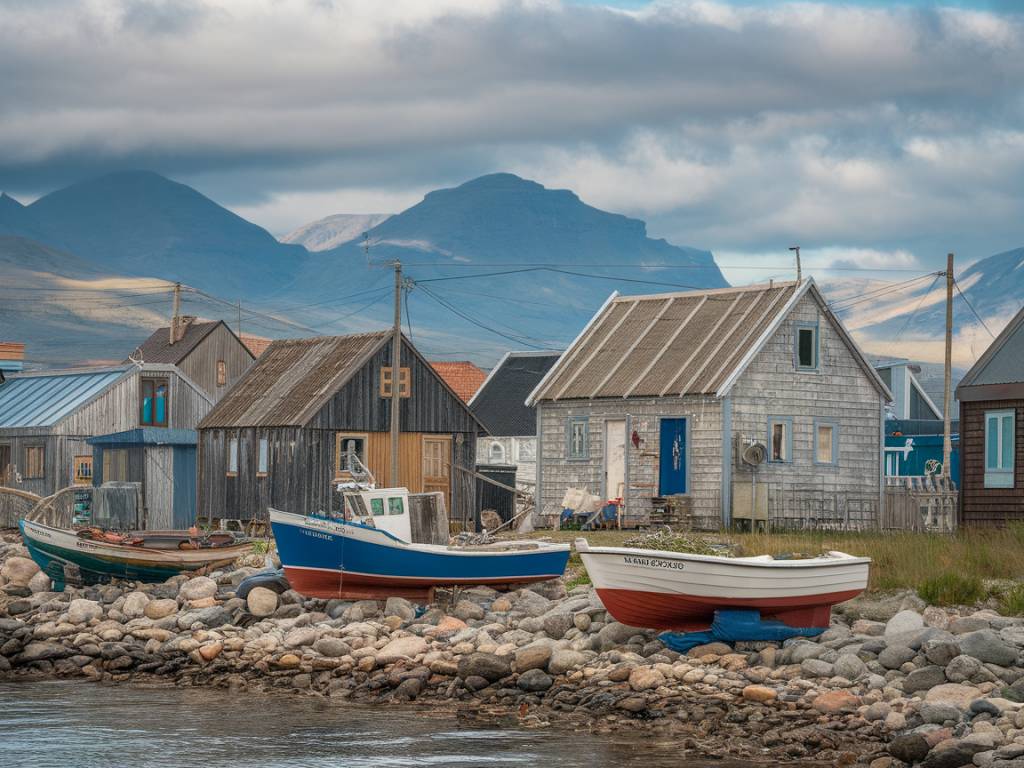Exploring the geothermal area of Krafla in North Iceland is an unparalleled experience, a journey through the very veins of the Earth’s geothermal wonderlands. Nestled in the northeastern region of Iceland, this area is characterized by its active volcanoes, steaming vents, bubbling mud pots, and vibrant geothermal features. This region is not only a geological marvel but also a testament to the raw, untamed beauty of Icelandic nature.
Getting There
Reaching Krafla is relatively straightforward, although it requires some planning. Most travelers will start from Akureyri, the largest town in North Iceland, which is approximately 100 kilometers away. From Akureyri, you can rent a car and drive through beautiful, winding roads lined with rugged landscapes. The drive itself sets the stage for the dramatic beauty you will encounter at Krafla.
The Ring Road (Route 1) is your main route, and from here, you will take Route 863 towards Krafla. The roads are well-maintained, but it’s advisable to check weather conditions, as Iceland’s weather can be temperamental. In winter, the roads can be icy and hazardous, so always make sure your rental car is equipped with appropriate tires.
The Spectacular Viti Crater
One of the first landmarks you’ll encounter is the captivating Viti Crater. Viti, which means « hell » in Icelandic, is a volcanic crater lake formed during an eruption in 1724. The name might sound ominous, but its sight is anything but hellish. The turquoise-colored water against the backdrop of reddish-brown crater walls creates an almost surreal landscape.
I recommend walking around the rim of the crater, which takes approximately 30-45 minutes. The trail is relatively easy but can be challenging during wet conditions. The panoramic views from different points along the rim are nothing short of breathtaking. You can see the contrasting colors of the landscape, feel the steam rising from nearby geothermal vents, and truly appreciate the raw power of Icelandic nature.
The Krafla Power Station
A visit to the Krafla geothermal area is not complete without touring the Krafla Power Station. This station is a testament to Iceland’s commitment to renewable energy. It harnesses the geothermal power of the region to provide electricity for the surrounding areas.
Guided tours are available and highly recommended. The tour provides an insightful look into how geothermal energy is extracted and utilized. As you walk through the facility, you learn about the history of geothermal energy in Iceland, the technology used, and the environmental benefits of this renewable resource. The guided tour also offers an opportunity to ask questions and deepen your understanding of geothermal energy’s pivotal role in Iceland’s energy landscape.
Exploring the Lava Fields: Leirhnjúkur
Adjacent to the Krafla Power Station, you will find the fascinating Leirhnjúkur lava fields. This area has been shaped by numerous eruptions over centuries, with the most recent activity occurring between 1975 and 1984. Walking through Leirhnjúkur feels like stepping onto another planet.
The trails take you through various geothermal features including steaming vents and bubbling mud pools. The lava fields are vast, and the paths weave through rugged terrain. I found the contrast between the dark, hardened lava and the vibrant mosses growing on top to be particularly striking. Be sure to stay on marked paths, as the ground can be unstable and temperatures beneath the surface can be extremely high.
One trail that you should not miss is the path leading to the Leirhnjúkur caldera. This hike is approximately 4 kilometers round trip and takes about 2-3 hours. The views from the caldera are absolutely stunning, offering sweeping vistas of the surrounding geothermal activity.
Hverir Geothermal Area
Just a short drive from Krafla, you will find the Hverir geothermal area, also known as Hverarönd. This site is famous for its bubbling mud pots and fumaroles. The colorful minerals deposited by the geothermal activity give the area a vibrant, otherworldly appearance.
As you explore, you will encounter a sensory overload—the smell of sulfur, the sound of steam escaping from the ground, and the sight of constantly shifting mud pots. It’s essential to stay on marked paths here as well, due to the instability of the ground and the high temperatures below the surface.
One fascinating feature at Hverir is the mud pots. These boiling cauldrons of mud are consistently active, changing shape and size as new geothermal forces come into play. It’s a photographer’s dream, with the stark contrast of the mud and the vivid blue sky above.
Essential Tips for a Successful Visit
To make the most out of your visit to Krafla, here are some essential tips:
- Wear Appropriate Clothing: The weather in Iceland can be unpredictable. Layering is key. Wear waterproof and windproof clothing, sturdy hiking boots, and be prepared for sudden weather changes.
- Bring Food and Water: There are no facilities within the geothermal area itself. Pack enough snacks and water to keep you energized throughout the day.
- Stay on Marked Paths: The geothermal ground can be incredibly unstable. For your safety and to protect the unique landscape, always stay on designated paths.
- Check Weather Conditions: Whether you’re driving or hiking, always check the weather forecast and road conditions. High winds and snow can make travel hazardous.
- Respect Nature: Leave no trace and respect the natural environment. Iceland’s landscapes are fragile, and preserving them is essential for future generations to enjoy.
The geothermal area of Krafla in North Iceland is a sensory adventure into the heart of our planet’s geothermal wonders. From the haunting beauty of the Viti Crater to the raw, otherworldly landscapes of Leirhnjúkur and Hverir, this region offers unparalleled experiences. It’s a journey into Iceland’s fiery heart, a testament to its geothermal power, and an embodiment of nature’s untamed beauty. So pack your bags, lace up your hiking boots, and prepare for an unforgettable adventure into one of Iceland’s most remarkable regions.





